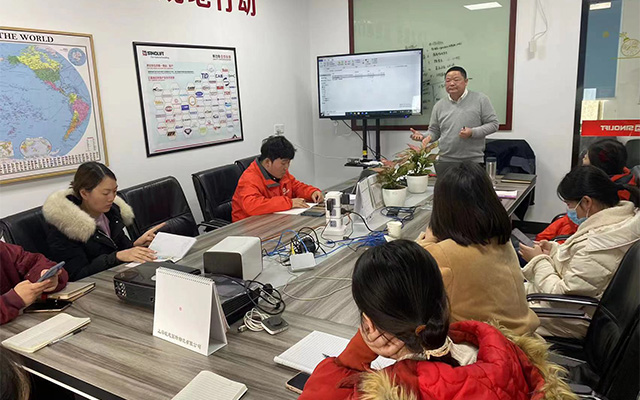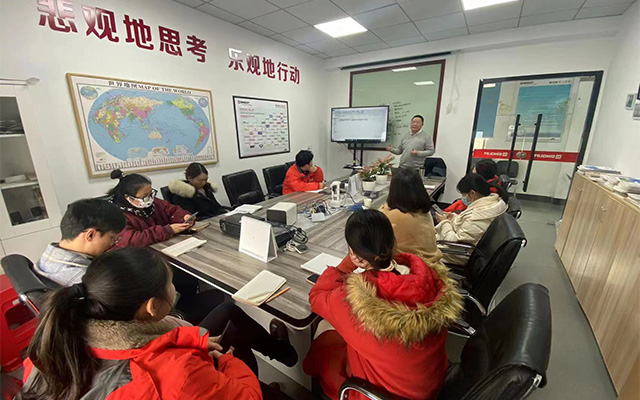Last week, our
sales manager learned about the knowledge of battery. They summarize the frequent
questions about customer according to daily work. Technology experts dealt with
every question for them. We hope to help customers choose the right forklift
battery.
But customers
maybe need to be familiar with the battery tips to choose?

1. Start with the
make and model specifications of your forklift and lift truck
Your choice of
equipment power source is largely determined by the technical specifications of
your forklift. As users of diesel or propane powered Class 4 and Class 5
sit-down forklifts continue to convert to Class 1 electric forklifts, more than
half of today's forklifts are battery powered. Durable, high-capacity
lithium-ion (Li-ion) batteries have become available for the most demanding
applications, handling heavy and bulky loads.
Here are the key
specifications you need to look for:
Battery Voltage
(V) and Capacity (Ah)
There are several
standard voltage options (12V, 24V, 36V, 48V, 72V, 80V) and different capacity
options (from 100Ah to 1000Ah and higher) available for various lift truck
models.
For example, a 24V
210Ah battery is typically used for a 4000 lbs. pallet jack; while an 80V
1050Ah is suitable for counterbalanced sit-down forklifts to handle loads up to
20K lbs.
Battery
compartment size
Forklift battery
compartments are often unique in size, so finding a perfect and precise fit is
critical. It is also important to consider the type of cable connector and its
location on the battery and truck.
Some OEM
manufacturers have two different sizes of battery compartments.
Battery weight and
counterweight
Different forklift
models have different recommended battery weight requirements that you should
consider when making your selection. Additional counterweights are added to
batteries intended for heavy-duty applications.
Li-ion vs.
lead-acid forklift batteries in different types of electric forklifts (Class I,
II and III)
Lithium batteries
are best suited for Class I, II and III forklifts and other off-road electric
vehicles such as sweepers and scrubbers, boat trailers, etc. The reason? Three
times the life of lead-acid technology, excellent safety, minimal maintenance,
stable operation at low or high temperatures, and high energy capacity in
kilowatt hours.
LFP (lithium iron
phosphate) and NMC (lithium-manganese-cobalt-oxide).
These batteries
are used in electric forklifts.
NMC and NCA
(Lithium-Cobalt-Nickel-Oxide).
These types of
lithium batteries are more commonly used in passenger electric vehicles (EVs)
and electronics due to their lower overall weight and higher energy density per
kilogram.
Until recently,
lead-acid batteries have been widely used in all types of electric forklifts. TPPL
is a newer version of this type of battery. It has higher efficiency and higher
charging speed, but only compared to traditional flooded lead-acid technology
or sealed lead-acid batteries, such as Absorption Glass Mat (AGM).
In most cases,
lithium-ion batteries are a more economical and efficient choice for industrial
applications than any lead-acid battery, including AGM or TPPL batteries.
Forklift-Battery
Communication
Controller Area
Network (CAN bus) allows applications where microcontrollers and devices can
communicate with each other without a host. Not all battery brands can be fully
integrated with all forklift models via the CAN bus. There is then the option
to use an external Battery Discharge Indicator (BDI), which provides the
operator with visual and audible signals of battery charge status and readiness
for work.

2. Consider the
details of your material handling equipment application and your company policy
The performance of
the battery must be appropriate for the actual use of the forklift or lift.
Sometimes the same truck will be used in different ways in the same facility
(for example, handling different loads). In this case, you may need to equip
them with different batteries. Your company's policies and standards may also
come into play.
Load weight, lift
height and travel distance
The heavier the
load, the higher the lift and the longer the route, the more battery capacity
you will need to last all day. Consider the average and maximum weight of the
load, the distance traveled the height of the lift and the ramp. The most
demanding applications, such as food and beverage, can have load weights of
15,000 - 20,000 lbs.
Forklift
Attachments
As much as the
weight of the load, the size of the pallet or the shape of the load to be
moved, using heavy-duty forklift attachments will require more "gas in the
tank" - higher battery capacity. Hydraulic paper clamps are a good example
of where you need to plan for some extra power.
Freezers or
coolers
Will the forklift
operate in a cooler or freezer? For low temperature operations, you may need to
choose forklift batteries with additional insulation and heating elements.
Charging time and
speed. lfp and nmc lithium ion batteries vs. lead acid batteries
Single battery
operation eliminates the need to replace dead batteries with new ones during
operation. In most cases, this is only possible with opportunistic charging of
lithium-ion batteries during breaks, which is convenient for the operator and
does not interfere with the production process. A few 15-minute breaks
| 


 Chinese
Chinese USA
USA English
English Russia
Russia
